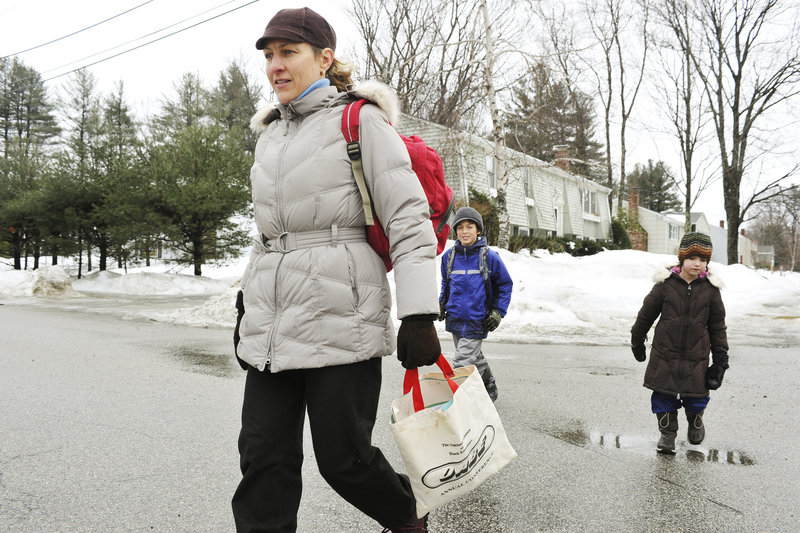PORTLAND — The way Julie Fitzgerald sees it, the streets around her home on Ludlow Street are clearly not “complete.”
Fitzgerald walks her two children to and from the nearby Hall Elementary School almost daily, and notes that there are a couple of places where the sidewalks simply end, forcing them to walk in the streets.
“We’ve had several close calls,” said Fitzgerald, pointing out that a few of the intersections are particularly hazardous during the winter, when high snowbanks can block drivers’ views of what’s around the corner.
Fitzgerald hopes that the city’s backing of “Complete Streets” will address the problems.
The City Council created a “Complete Streets Working Group” on Monday to come up with a policy within the next year for making sure streets can accommodate cars, buses, bikes and pedestrians safely.
The effort is the product of several dozen groups, ranging from bicycling advocates to city planners and health insurers to architects.
The National Complete Streets Coalition has been encouraging cities and states to back efforts to make streets friendlier for all users, to encourage more sustainable development and make it easier for people to bike and walk as part of a move toward healthier lifestyles.
“There’s a growing body of evidence . . . that the quality of the built environment does affect health,” said Bruce Hyman, Portland’s bicycle and pedestrian program coordinator.
Creating a policy to support Complete Streets is largely a matter of forcing planners to think about that environment’s elements, he said.
For example, there’s already a presumption that most of Portland’s arterial streets should have bike lanes. A Complete Streets policy would essentially require planners who don’t include lanes when streets are rebuilt to justify their absence, rather than making advocates argue for inclusion.
Franklin Street, for instance, is being studied for redesign by city planners, Hyman said. They are looking at how to make sure the arterial includes a bike lane, along with more sidewalks, to encourage people to bike and walk on the street, which connects Interstate 295 and the Marginal Way area to the base of Munjoy Hill, Congress Street and Portland’s waterfront.
The city is also looking at fixing and expanding sidewalks elsewhere. For the first time in several years, Hyman said, Portland has set aside money for the work: $400,000 in the capital improvement program starting in July.
It’s unclear how far that money will go. City officials said they could not provide a dollar figure for the cost of building a sidewalk, saying it varies widely depending on the circumstances.
Fitzgerald said she hopes some of that money will go into her neighborhood. She said one reason she and her husband bought a house on Ludlow Street was that their kids would be able to walk to school from kindergarten through high school.
But when they moved there a few years ago, their kids — now 8 and 5 — weren’t yet in school, so Fitzgerald didn’t walk the route. When she did, she was surprised by what she found.
“There are gaps all along the routes to all the schools,” she said.
There are sidewalks for most of the walk, but the gaps are big enough to make her worry about safety, she said. So even though they live only a half-mile from the school, she’s not comfortable letting her kids walk by themselves.
Complete Streets could change her mind.
“Streets are not just for cars,” she said.
Staff Writer Edward D. Murphy can be contacted at 791-6465 or at: emurphy@pressherald.com
Send questions/comments to the editors.



